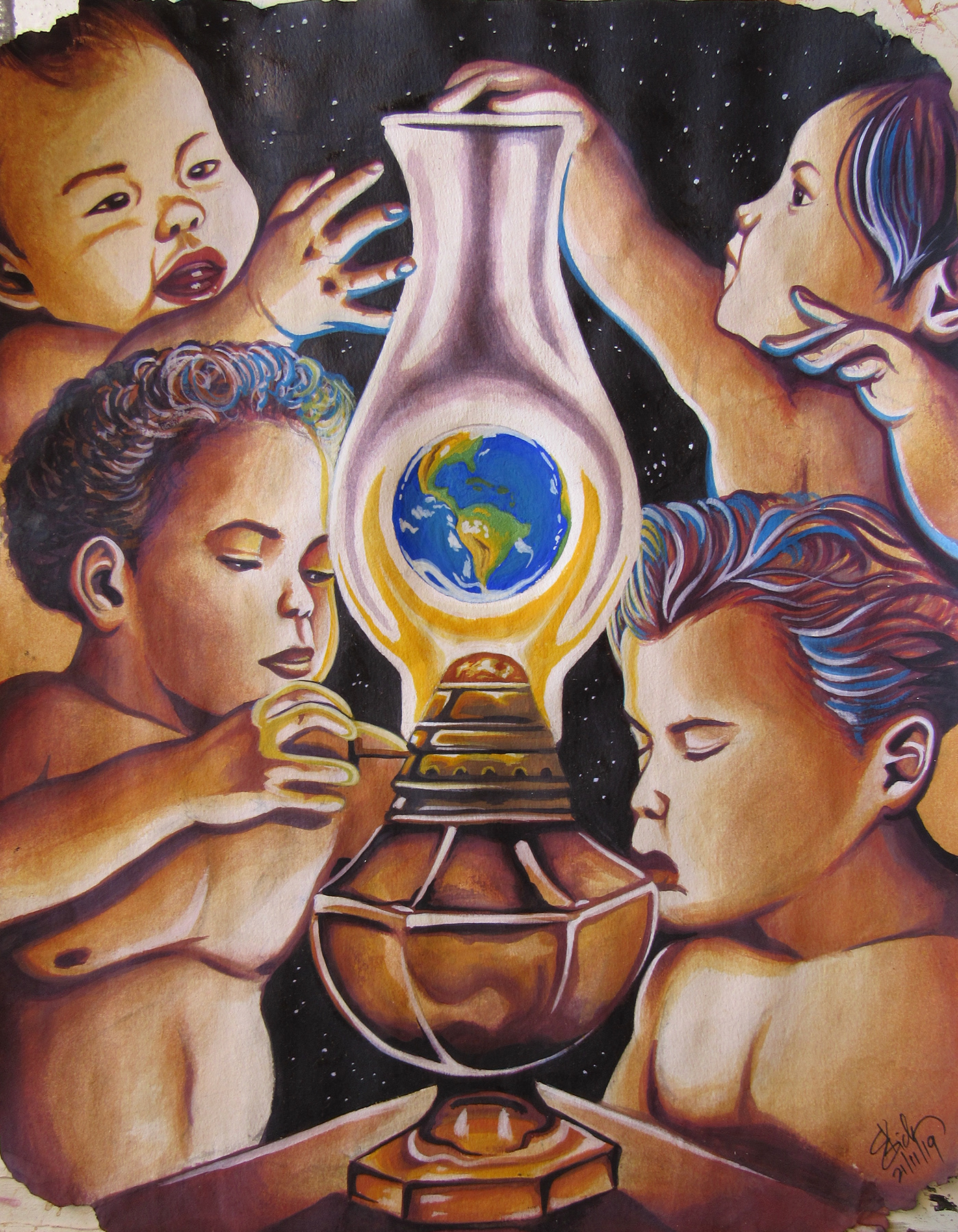Epistemology I (Belief)
Upon revision of the first three illustrations from the CORE series (The Fundamentals of Reality et al.) it was felt that the series could be broader and more expansive. The series has evolved to become highly philosophical by focusing on the five main branches of philosophy: Epistemology, Metaphysics, Value theory (Aesthetics and Ethics) and lastly Logic. It is meant to be an educational series to aid persons in understanding philosophy and its importance to the contemporary world. Among the reasons why philosophy is important as of present, human society is in a state of constant information overload. Consequently, facts are becoming replaced with speculation, falsehoods and in many cases blunt fiction. The CORE series exists not to show audiences the truth, but like philosophy it intends to provide the tools to individuals will be able to discover the truth on their own rather than be swayed by deceptive information.


Philosophy begins with Epistemology, which is simply the "theory of knowledge". In summary for any notion to be considered to be knowledge it must satisfy three criterion. These criterion are that a notion must be a belief, be truthful and have justification to be considered to be knowledge. The illustration in question tackles the criteria of "belief" as a necessary component in knowledge, because if one doesn't believe in something they cannot be said to have knowledge of it. As an example if I do not believe that Behance exists, I cannot say that I know of it or have knowledge of it. The illustration in question conveys a mock belief that the blue sphere of incredible biodiversity and evolution we call Earth is monitored by four human toddlers. The Earth is contained within the lamp chimney of a large kerosene lantern, while the toddlers control each of the four classical elements that are unique to this planet.

The story begins with the burner of the lantern which is replaced with the sphere of our radiant ever present Sun also called Sol or Solar. It is the light bringer and source of all the energy of this planet from a scientific perspective. The sun for many millennia had been in close association with fire (even though it is not made of fire per se), humans have associated the sun with fire due to its warmth and explosive energy. Controlling the sun's intensity by operating the burner lever is the child on the left. Each child for the sake of equality represents one of the four main human races: Negroid, Caucasiod, Dravidian and Mongoloid. The child controlling the "heat" of the Earth through adjusting the sun's intensity represents the classical element of Fire and is a negroid.

To the immediate right a caucasoid toddler is seen blowing the fuel of sun and consequently the Earth as mentioned into the lantern's tank. The fuel in this case is the hydrogen fuel which the sun converts into helium to produce the light and heat we use for energy. Although hydrogen in its stable form is gaseous, this child represents not the element of Air but Earth itself. The child is the Earth element given that the physical substance of our planet, which comprise the periodic table were all fused into their various forms from the hydrogen atom. Above that child stands the dravidian and mongoloid children work together to create Air and Water. The one on the right covers the lantern's chimney to allow moisture to buildup in the Earth's atmosphere, while the left child creates that moisture within the glass housing. They both come together to create our atmosphere and thus climate.

There is also a fifth element which exists all around that the ancient Greeks referred to as Aether. This Aether is shown most prominently in the background space encapsulating the children. Aether can also be seen as a representation of a Creator deity or ALL, for providing the space within which all this creation occurs. The illustration were painted with gouache on acid-free paper primed with green tea. The green tea presents an air of antiquity which an illustration of this subject matter and philosophical magnitude would benefit from.

Onto the question of belief. Everyone can believe any and everything. Although this illustration does not depict my own personal beliefs regarding the structure of the cosmos, it nevertheless depicts "a belief". It conveys a probable truth, rather than a fact or proclaiming to be knowledge. However, if one takes the astronomical discoveries propelled by scientific fields of study out of the equation, the above image can be plausible. We could not know otherwise. All humans would have to go on regarding the structure of the cosmos, is "belief" whether as individuals or groups. Is this a good representation of knowledge? The short answer is no but just because a notion is not considered to be knowledge doesn't make it unimportant.
It is for this reason we felt it important to investigate this topic in detail. Human beings are a proud species whereas through socialisation we place allot of stock on some words of others. The word knowledge just happens to be one of them especially as it concerns the lack thereof. Lacking knowledge to some social spheres signifies a lack of intellect which is not always the case. Sometimes a belief can be far more powerful than knowledge on a whole. Belief lead to the vast system of notions that underpins modern and ancient societies which we came to call Religion. Belief causes entire populations to mobilise under a proposed ideology or regime, even though the other two parts of the equation "truth" and "justification" had not been satisfied. Such is the case in the field of politics, sociology, commerce in some cases and the arts. The important point to take away from this illustration is, more time should be spent satisfying all three criterion "IF" the intention is to seek knowledge.


